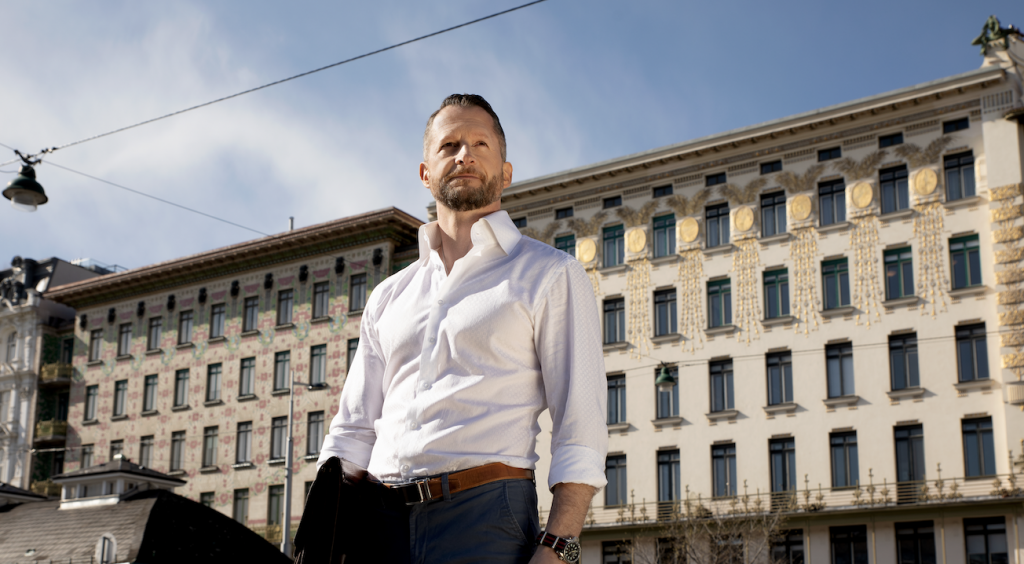It’s often the case that out of difficult periods new models and ways of working emerge, and the Covid-19 pandemic has firmly established the concept of remote working. Less firmly established in the English-speaking world, however, is the concept of Co-CEOs, says Guenther Eisinger
Co-CEOs is an unusual leadership approach whereby, rather than splitting senior leadership positions out in a more conventional model, where a CEO would generally be accompanied by a chief operating officer or a chief technology officer, two CEOs work side by side.
This model, which we undertook when starting our remote onboarding business 18 months ago, has operated virtually ever since. Though the leadership role is shared, our separate roles are clearly defined – with one side of the partnership responsible for technical, products, sales and marketing, and the other controlling operations, people, legal and finance – while ultimately working towards the same goals.
Though the concept of Co-CEOs is not unusual in German-speaking parts of the world – for example, Bitpanda is an Austrian unicorn with two CEOs – it is not common in the UK. But as businesses are evolving and redefining themselves, particularly with remote working, traditional organisational structures are evolving too.
With this, comes the opportunity to create new structures at senior level as well, though, with a co-CEO model, there are possibilities, concerns and considerations that need to be taken into account.
Aligning clear responsibilities
First, and to be upfront, a co-CEO relationship is not one that could work for all organisations. In part, its success relies heavily on the ability to set clear but separate responsibilities while ensuring that the two sides align simultaneously.
For example, while Matt Wilson, my co-CEO and I share responsibility, we have explicit, clearly defined roles, which work because of complementary skill sets.
However, in some organisations, this could risk creating departmental silos in which decisions are made entirely separately and teams are disconnected. To mitigate this, making strategic decisions together is important, as is our senior team leaders completing cross-functional work. Establishing early-on how two sides will resolve potential conflicts over strategic decisions is also necessary to ensure the roles and purpose remain aligned.
Personalities can make or break the relationship
A strong co-CEO relationship, while needing firmly established roles and expectations around duties, is also dependent on how well the two can work together personality-wise.
In many cases, a sole CEO is the dominant personality of an organisation or it may be that in businesses where there are several co-founders, one naturally adopts the leadership role. However, there is no place for this hierarchy in a co-CEO relationship – its success remains dependent on two personalities that can work side by side.
Creating an open and engaging culture
Getting the relationship right between co-CEOs can create many possibilities for the rest of a business. In particular, when an organisational structure is not focused on one person, it can encourage an open and engaging culture where collaboration is celebrated. For example, as co-CEOs are focused on their own responsibilities, they actively state if they don’t need to be involved in a project which enables autonomy and decision making from others in the business. Ultimately, this encourages people to make their own decisions and feed them back to leadership where needed.
Encouraging diversity of thought
An organisation structured around co-CEOs is also one that encourages diversity of thought and healthy push back from entrepreneurial employees. In a business that is purposefully built around hiring individual experts into particular roles, the opinions of each are valued and it is beneficial to be challenged, with people asking ‘why?’ before ‘how?’.
This dynamic is healthy, freeing up space for individuals to have their say and CEOs to avoid micromanaging every aspect of a business. Particularly in startups, when CEOs must be very hands on, building an organisation that appreciates individuals bouncing ideas off of each other can lighten the load and free up time for other vital tasks.
Negating criticism
It’s important to remember that even a successful co-CEO relationship will be critiqued by others because of its unconventional nature, but this does not mean that the setup is incorrect. Venture capitalists, for example, are some of those more likely to question the leadership structure, but this does not need to be problematic for a business: ultimately it is a question of results.
If a business is performing well using this structure, then others will see the potential, accept it and move forward. Of course, the nature of the leadership structure will become harder to justify if the numbers aren’t strong.
Using a co-CEO structure is not for every business, but almost by definition, startups are breaking conventions. Breaking organisational structures, then, if it’s right for the founders, can become right for many others.
Guenther Eisinger is the Co-CEO and Co-Founder of Omnipresent.

Guenther served in the Austrian Special Forces leading combat units in Afghanistan, Eastern Europe and Africa. Before Omnipresent he ran his own international business and has three Master’s Degrees and a PhD. He has over 20 years of operational expertise in over 40 countries worldwide. Guenther speaks German and English.



